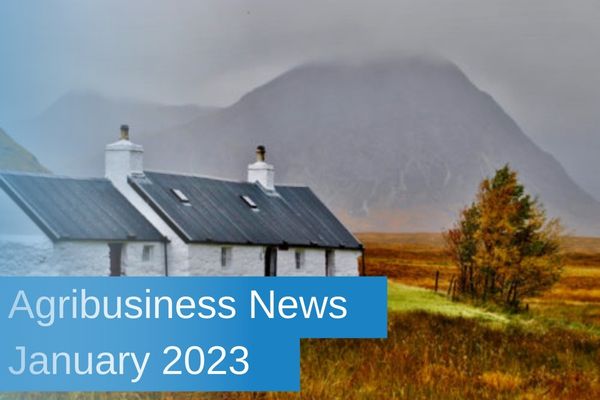Agribusiness News January 2023 – Financial Matters
22 December 20222022 – A year of uncertainty
2022 has been a tumultuous political and financial year for the UK, with three Prime Ministers and four Chancellors within the calendar year; each bringing their own unique impact on the UK economy.
The pandemic has left a weaker economy and the war in Ukraine has significantly impacted energy prices. With inflation peaking at 11.1% in the 12 months to October 2022, prices have risen significantly.
The agricultural price index for input costs increased by 28.3% in the year to October 2022, with agricultural outputs increasing by 22.3%. Key drivers of costs were fertiliser (83%), energy (52%) and feedstuffs ( over 30%). The increase in output sale prices is more sector dependent; milk has increased by 54% and cereal crops are up approximately 40%, but potatoes and sheep have remained steady with poultry slightly decreasing.
Changes in fiscal policy
Following the September ‘mini-budget’ and its subsequent fallout, the UK Government have now taken a more conservative approach to taxation; as seen in the UK November Autumn Statement.
Key changes for agriculture include retaining the Annual Investment Allowance at £1m on a permanent basis. This allows investment in plant and machinery when best suited to business needs, rather than just for tax purposes.
Corporation Tax will increase to a main rate of 25% from April 2023 for profits of £250k and over. Profits of up to £50k will still be taxed at 19%, those between these figures are subject to a tapered rate.
Along with the personal allowance of £12,570 remaining frozen until 2028, Scottish Government announced in their 15 December budget statement that the starter, basic and intermediate rate bands of Income Tax would remain unchanged, rather than rising with inflation like last year. As inflationary pressures drive up wages, this leaves individuals paying more tax for the same jobs. The higher and top tax rates will rise by 1%, to 42% and 47% respectively. Earning £35k, this equates to a difference of approximately £300. On £50k, this rises to approximately £2k difference. All individuals earning over £14,733 pay more Income Tax than those in England. The top Scottish rate tax threshold will be reduced from £150,000 to £125,140, in line with the rest of the UK.
Other changes of note include halving the current Capital Gains Tax allowance of £12.3k and dividend allowance of £2k in April 2023 and again in April 2024. This will result in allowances of £3k and £0.5k from April 2024. Finally, the Scottish Government announced the Additional Dwelling Supplement within LBTT will rise from 4% to 6%.
Within the Scottish Government’s budget for agriculture, funding for Pillar 1 and LFASS remains the same for 2023/24. Funding has also been maintained for Agri environmental measures, with AECS funding rounds currently in place until 2024.
The year to come
On 15 December, the Bank of England announced an increase to 3.5% in the base interest rate. Many analysts predict rates will rise to approximately 4.5% or 5% in 2023, before settling around 3% in the medium term. This is a tool that is used to help curb the rates of inflation, however a return to the target of 2% inflation is not expected until 2024.
This is a sentiment being echoed globally with the US Federal Reserve and European Central Bank each raising interest rates by 0.5% in December.
It is anticipated that inflation has now peaked and will begin to fall gradually in spring, with many analysts predicting a rate of around 3% by the end of 2023.
andrew.coalter@sac.co.uk, 07721 473 566
Sign up to the FAS newsletter
Receive updates on news, events and publications from Scotland’s Farm Advisory Service

